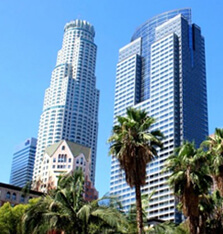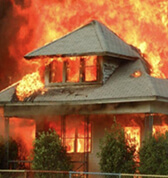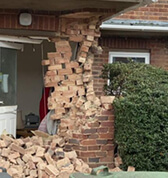What Does Additional Living Expense (ALE) Insurance Cover?
If you have standard homeowners, condo, or renters insurance, you typically have additional living expense (ALE) coverage in your policy.
It comes in handy if your home is uninhabitable due to a covered event such as smoke and fire damage. While it’s being repaired or rebuilt, your insurer will reimburse you for additional living expenses to maintain your standard of living. It prevents you from being on the street or having to rely on friends or family for a roof over your head.
Read on to learn more about what additional living expense insurance covers and how it works.
What Is Additional Living Expense (ALE) Coverage?
Additional living expense coverage is included in most standard homeowners, condo, or renters insurance policies.
An HO-3 homeowners insurance policy will typically include the following (or similar wording) under “Loss Of Use” in Section I – Property Coverages:
Additional Living Expense
“If a loss covered under Section I makes that part of the “residence premises” where you reside not fit to live in, we cover any necessary increase in living expenses incurred by you so that your household can maintain its normal standard of living.
Payment will be for the shortest time required to repair or replace the damage or, if you permanently relocate, the shortest time required for your household to settle elsewhere.”
The most important phrases in the above clause are:
- not fit to live in
- necessary increase in living expenses incurred
- normal standard of living
“Not Fit to Live In”
The phrase is not defined in the policy, which leaves it open to interpretation. What makes your home unfit to live in? The insurance adjuster appointed by your insurance company may have a different opinion from you or a public adjuster.
There is no strict legal definition for the term “not fit to live in” that’s generally accepted as fair or reasonable. In principle, we can assume that if your home suffers damage caused by a covered event and living in it might compromise your health, safety, and security that it’s not fit to live in.
Note that your insurance company may take several other factors into account based on your unique circumstances and the damage your property sustained.
“Necessary Increase in Living Expenses Incurred”
As the term implies, ALE coverage is for additional expenses, not pre-existing expenses. It only covers expenses you wouldn’t have had to incur if you could continue living in your house after a covered event.
For example, you cannot claim your mortgage payment as an additional expense. But if you have to stay in a hotel because your home is unfit to live in, it’s a different story. You can submit a claim for the additional costs you have to incur for accommodation.
A good question to ask yourself is:
Is this an expense I incurred because of the loss event?
If the answer is yes, it’s probably reasonable for you to expect your insurer to reimburse you within reason.
Note that although staying in a hotel might be necessary, your insurance company might not agree that it’s necessary to stay in a five-star hotel. Ask your insurer what they consider to be reasonable and get it in writing.
In addition, additional living expense insurance cover is for the necessary increase in living expenses incurred. It reimburses you the difference between your regular living expenses before a covered loss and your living expenses after a covered loss.
For example, let’s assume you usually spend about $150 on gas each month to get to work. The hotel where you are staying is further away and you now spend $200 on gas each month.
Your ALE coverage will only reimburse you for the difference or the additional amount you spend on fuel because of the loss event. Based on our above example, they will only reimburse you the additional $50 it’s costing you to get to work.
“Normal Standard of Living”
ALE coverage helps you maintain your standard of living when your home is unfit to live in. However, some homeowners unwittingly use additional living expense insurance cover to increase their standard of living.
For example, by renting a similar house while yours is being repaired or rebuilt, you are maintaining your standard of living. But by renting a larger, more luxurious home in a better area, you are increasing your standard of living. That is not allowed.
And if you typically spend $400 on groceries every month, keep to that range. If you suddenly increase it to $600 because you’re buying more luxuries, don’t expect your insurer to finance the increase in your standard of living.
Note that everyone has a different standard of living. The key is to remain as close as possible to the standard of living you enjoyed before the loss event.
ALE Coverage Limits
ALE coverage is typically subject to the following limits:
- 30 percent of the dwelling limit under HO-2, HO-3, and HO-5 policies (homeowners insurance)
- 30 percent of the personal property limit under a HO-4 policy (renters insurance)
- 50 percent of the personal property limit under a HO-6 policy (condo owners policy)
For example, assume your ALE coverage limit is 30% of your dwelling limit. If you have $500,000 of dwelling coverage, your additional living expense coverage is $150,000 maximum.
Note: Some homeowners believe if they save their insurer money on ALE payouts, the savings will go toward their dwelling or personal property coverage. However, this isn’t true. Spend what you are entitled to under your additional living expense insurance cover.
How Do I Calculate My Additional Living Expenses?
The easiest way to calculate your additional living expenses is to use the following calculation:
(Current Living Expenses) – (Living Expenses Before Your Covered Loss) = ALE
Example:
Pet Boarding – You pay $45 per night to board your dog, whereas before you looked after your dog. Since it’s an additional expense you didn’t previously have to pay for, you will typically receive full reimbursement from your insurer.
What Does ALE Insurance Cover?
Additional living expense cover might include, but are not limited to:
- Temporary accommodation costs
- Laundry costs
- Storage fees
- Moving or displacement costs
- Pet boarding
- Restaurant meals
- Increased mileage or transportation costs
- Furniture rentals
- Internet and computer setup fees
- Cleaning expenses moving in and out of rental home
Tip: Ask the insurance adjuster handling your claim for guidelines on how much you can spend. For example, insurers typically have guidelines of how much you can spend on hotel accommodation. And get authorization in writing for any special expenses that might not be considered normal.
How ALE Payments Are Made
Insurers will typically reimburse you by check for additional living expenses as and when you submit your claim.
If you don’t have sufficient funds to pay for additional living expenses upfront, your insurance company might be willing to give you an advance payment.
That’s a Wrap
We trust this article has given you a better idea of what additional living expense insurance covers.
For large or complex claims, such as when your home is not fit to live in, we recommend you consider hiring a public adjuster to act in your best interests.
A licensed public adjuster can help you overcome the challenges of managing your claim and can assist you to get the best possible settlement offer you’re entitled to.
Avner Gat, Inc. is based in Los Angeles and has 17+ years of experience as a public adjuster covering Southern California. We protect homeowners from the games and fine print that insurance companies are known for.
Call us at (818) 917-5256 to find out how we can help you.





































